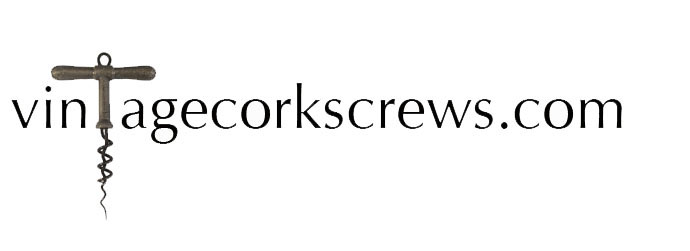 always buying, selling, trading, and very often using...
always buying, selling, trading, and very often using... always buying, selling, trading, and very often using...
always buying, selling, trading, and very often using...
Corkscrew Merchants of Old San Francisco
originally published in the Spring 2025 issue of The Bottle Scrue Times
 |
In 1978, Bernard R. Levine published the seminal text on the cutlers of San Francisco, entitled KNIFEMAKERS OF OLD SAN FRANCISCO. And it is within this book that we begin to understand some of the history of the cutlers of San Francisco, but also some of the corkscrews that these same cutlers made. It should be added, that the cutlers mentioned in Levine’s text, did have storefronts and did indeed sell to the retail market, but these same cutlers also manufactured corkscrews for retail establishments in the city of San Francisco, and that what this article is about, those merchants who amongst their wares sold corkscrews by these very cutlers, but instead of being marked by the usual suspects; cutlers such as Will & Finck, J. H. Schintz, or Michael Price, the corkscrews were marked for the merchant’s establishment instead. |
Bernard Levine's explains: Of those cutlers who advertised that they made cutlery to order, most actually had their new work done by others. Several, such as B. Nathan & Co., George C. Shreve & Co., and Haynes & Lawton, had some of their special cutlery made by Will & Finck. Elsewhere in his text, Levine also mentions other retailers of the era: In San Francisco directories, and in other early sources, are dozens of names of cutlers, cutlery importers, and cutlery retailers. Many of them no doubt sold razors, knifes, and scissors made elsewhere but marked with their own names. In addition, some of San Francisco’s many hardware and sporting goods wholesalers distributed knives marked with their own company names or trademarks. Frequently encountered are knives marked; Pacific Hardware and Steel, Adolph Blaich; Justinian Caire Co.; and Miller Sloss and Scott. While the list that follows is not exhaustive, it is representative of a few of the retailers listed in Levine’s book, and a couple that are not listed. And it is my hope that after reading this, you might examine your own direct pull Will-&-Finck-like corkscrews and check the markings. What other San Francisco retail establishments might you find marked on the shaft of these twisted treasures Justinian Caire & Company:
|
||
 |
 |
marked J. CAIRE, S.F. CAL |
Justinian Caire immigrated from France in 1851 and started an importing/retail company that focused on a myriad of wares, but much was related to mining and assaying. The company story is a fascinating one, as Justinian Caire ultimately bought Santa Cruz Island off the coast of Santa Barbara and among his many enterprises ranched sheep, planted vineyards and made wine. In the mid to late 1800’s, while California was suffering from the blight of Phylloxera that destroyed much of the grapevines in California, the pests weren’t able to make their way to the Santa Cruz Island, and as a result, that part of his island business flourished, with Santa Cruz Island Winery producing tens of thousands of gallons of wines (Chablis and Zinfandel) and “exporting” them to the mainland of California by schooner.
|
||
 |
 |
Label images courtesy of the Santa Cruz Island Foundation |
That said, as we see in billheads from the time, Justinian Caire & Co., went from selling Assaying and Mining Supplies and Excelsior Wire works to also selling “VINEYARD, CELLAR & BOTTLING MATERIALS, CAPS, CORKS, BOTTLES &C.” And, if you are going to bottle wine, you probably will need a corkscrew.
|
|
 |
As seen in the Justinian Caire Company Illustrated Catalog and Price List one could purchase, “Cork Extractors.—Of wire, for pulling corks out of narrow-mouth bottles.” for $0.15 each, and “Corkscrews.—of good quality.” for $0.50 each. Unfortunately, while the catalog is indeed illustrated, the corkscrews and cork extractors are not. In the World Class Corkscrews book, there is another J. CAIRE corkscrew pictured with an turned ivory handle that is certainly “…Of good quality,” which was part of Jack Bandy’s collection.
I am guessing this one new was more than fifty cents and would be worth a bit more |
Goldberg Bowen & Company: |
||
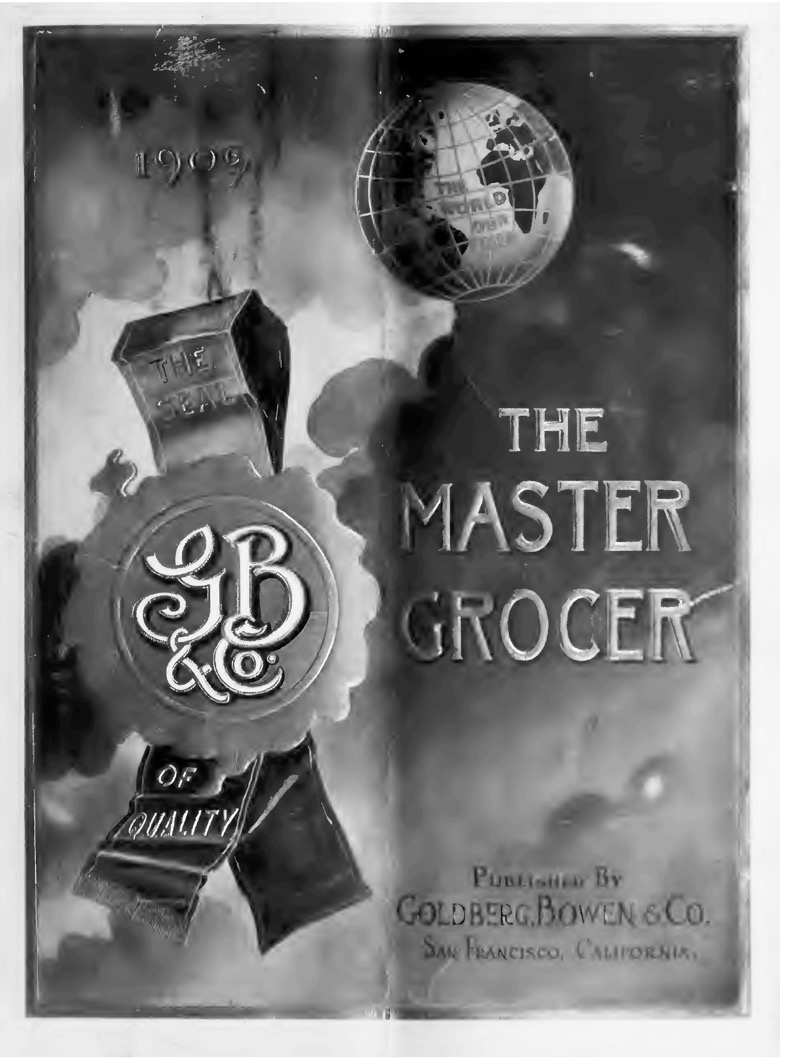 |
 |
marked GOLDBERG BOWEN & CO |
Goldberg, Bowen & Company was a grocer in San Francisco and was established in 1881—after the merger of Goldberg & Lebenbaum and the Bowen Brothers, created Goldberg, Bowen, and Lebenbaum. They sold a myriad of products, and even had their own line of spirits and wines. In 1885, the Bowen Brothers bought Lebenbaum out of the business, and the grocer was renamed Goldberg, Bowen & Company.
|
||
 |
Erica J. Peters in her book San Francisco: A Food Biography, explains, “In the late nineteenth century, many well-to-do in San Francisco satisfied their gourmet desires at Goldberg, Bowen & Co. The upscale grocery delivered imported goods and fine wines across the city…they gained a reputation as San Francisco’s preeminent grocery establishment, both wholesale and retail.” Within their catalog from 1909 (68 pages) amongst some fabulous grocery items, they also carried a great selection of current and vintage wines; offering bottles of Latour (1889) for $2.00, bottles of Lafite (1896) for $1.75, bottles of Margaux (1890) for $1.85, and if Sauterne was your fancy, Chateau Yquem (1889) was available for $2.00–and there was a case discount. |
 |
And, if you happen to turn to page 62 amongst other useful items, they sold corkscrews! |
Note on the price list of corkscrews that amongst other corkscrew offerings in 1909 at Goldberg, Bowen & Co., you could buy a Stag handle corkscrew with seal and crown opener for eighty five cents, and for those wanting to spend a bit more, you could get a Walrus tusk handle with Sterling silver mountings for five dollars. |
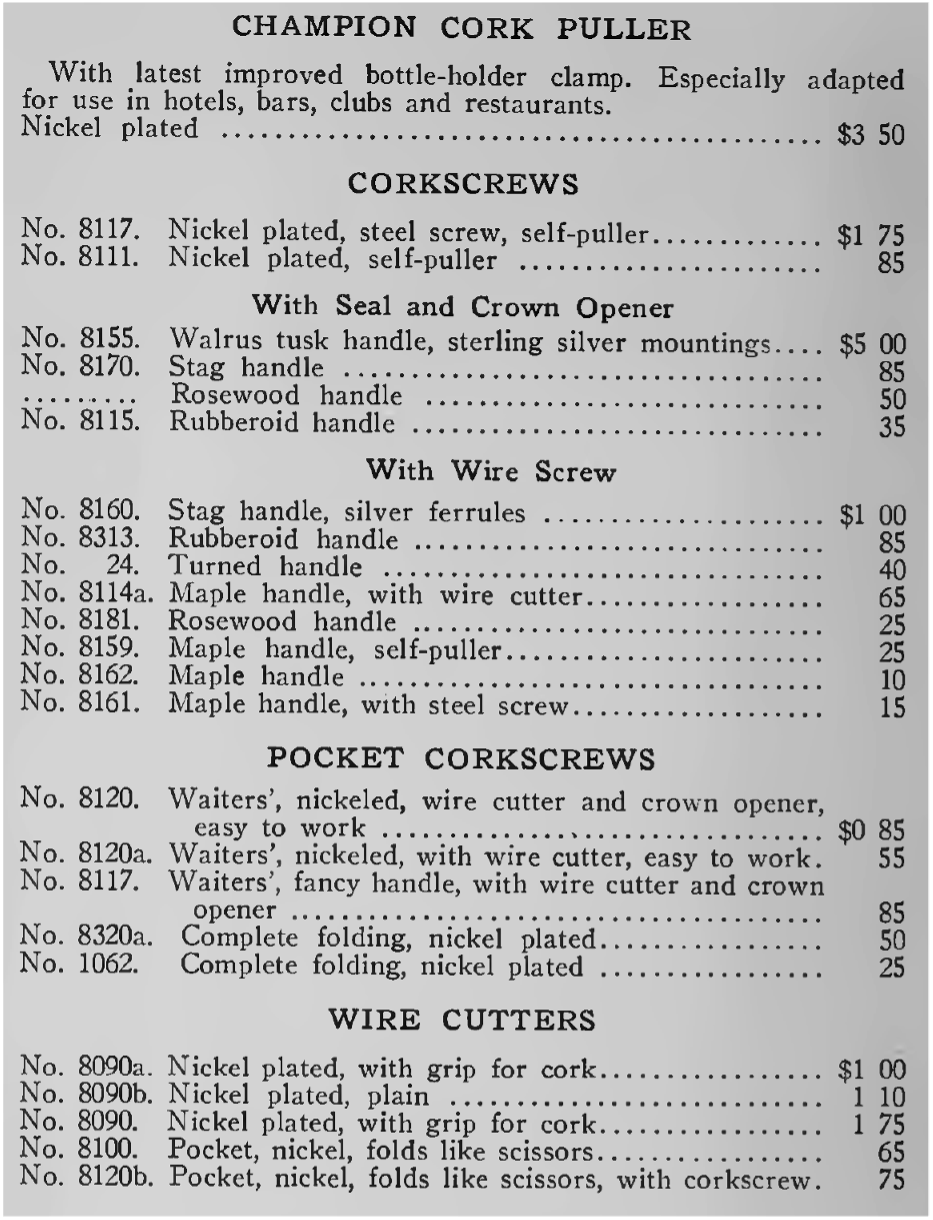 |
| Haviland & Company: | |
Most often we associate Haviland & Company with Limoges production in France, however, this corkscrew is marked is marked HAVILAND & CO. and S.F. CAL. In conversation with Don Bull and Gary Island they mentioned two companies that could be related; Haviland, Hooper, and Co. (Bull) and a Haviland & Co., from Marysville, California (Island). But there was also J.T. Haviland in San Francisco who had four patents, two of which were related to opening and stoppering of bottles:
|
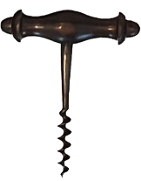 Marked Haviland & CO. Marked Haviland & CO. |
 |
After a bit of research, I ran into the answer. John T. Haviland was part of Haviland, Hooper, & Co., with this advertising (left) announcing in 1869 of the partnership of Jos. Kent Hooper and John T. Haviland. This “NEW HOUSE” selling “Crockery, Glassware, &C.” lasted a decade, and then in 1879 a dissolution of partnership announcement was published that explained Jos. Kent Hooper was retiring, and the firm would continue to do business, but under the moniker of Haviland & Co.
|
And indeed the John T. Haviland that was part of Hooper, Haviland & Co., the John T. Haviland that was formerly with Haynes & Lawton, is the same J. T. Haviland that we know from the four aforementioned patents—a conclusion that the late Joe Young had arrived at a dozen, or so, years ago, but without the link to Haviland & Co. Of course, we know J.T. Haviland from the back of O’Leary, with the only known example of patent 104,453 that found its way from Joe Young’s collection, into our collection, and now resides in another collector's collection. |
|
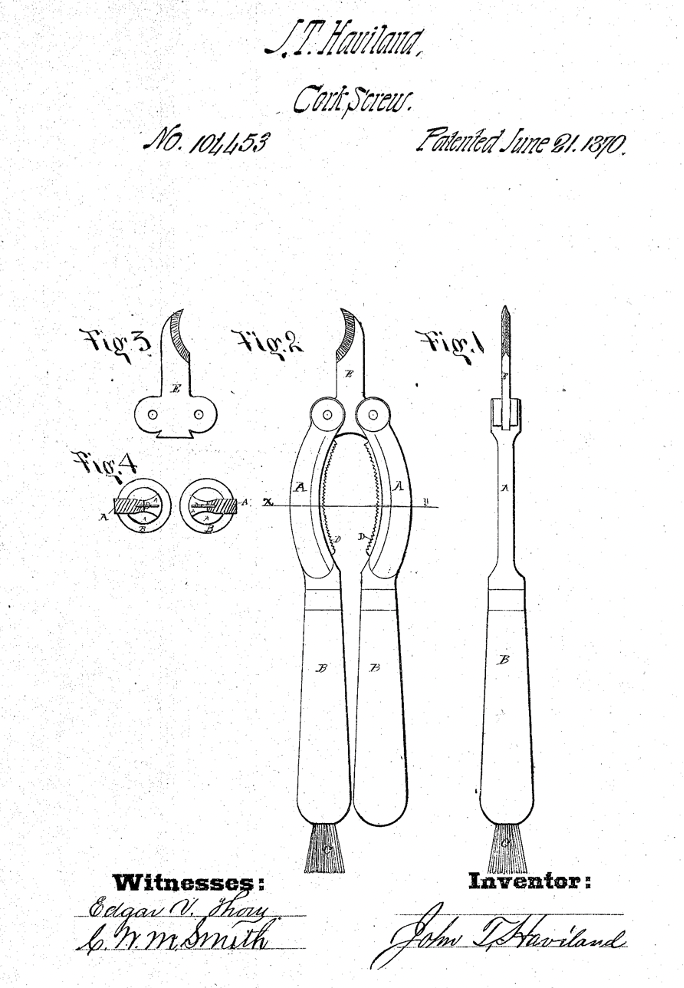 |
Marked J.T. HAVILAND and PAT. APPLIED FOR. |
Bernard Nathan & Company: |
||
 |
 |
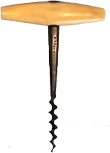 |
The Bay of San Francisco the Metropolis of the Pacific Coast and Its Suburban Cities, published in 1892 give a history of the B. Nathan & Co. The history of this house dates back to the time of “small things” in this city, Mr. Blumenthal having opened the business in 1850. He conducted it until 1858, and then sold to H. Hersch, who continued it until the time of his death in 1862; the property then passed into the hands of B. Nathan, who had been connected with the business some years previous. In 1868 F. Dohrmann…became associated with Mr. Nathan, and subsequently the firm changed to Nathan, Dohrmann & Co., in which style it has continued since that time with uninterrupted success.
|
||
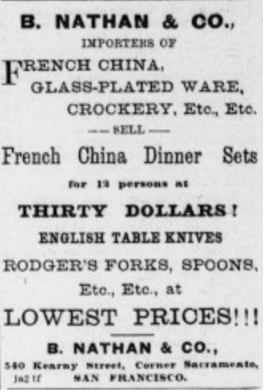 |
Advertising from the time does show some of the wares sold by B. Nathan & Co.: French China, Glass-Plated Ware, Crockery, English Table Knives, Rodger’s Forks and Spoons. And, as you see in the ad here, lots of etcetera etcetera. As mentioned previously, in 1868, Dohrmann joins the business, and for a brief time after his becoming a co-partner the B. Nathan & Co., name remained and then later changed to Nathan, Dohrmann & Co. Going back to the history of B. Nathan & Co., this gives a six-plus year period of when the B. Nathan marked corkscrews would have been made, dating them to between 1862 and 1868. |
|
A neat collection with our collection, and that brings me back to the question posed at beginning of this article, what other San Francisco merchants might you find marked on the shafts of these Will-&-Finck-like turned ivory or wooden direct pull corkscrews?
|
||
enjoy perusing the collection, and if you are so inclined, email us.